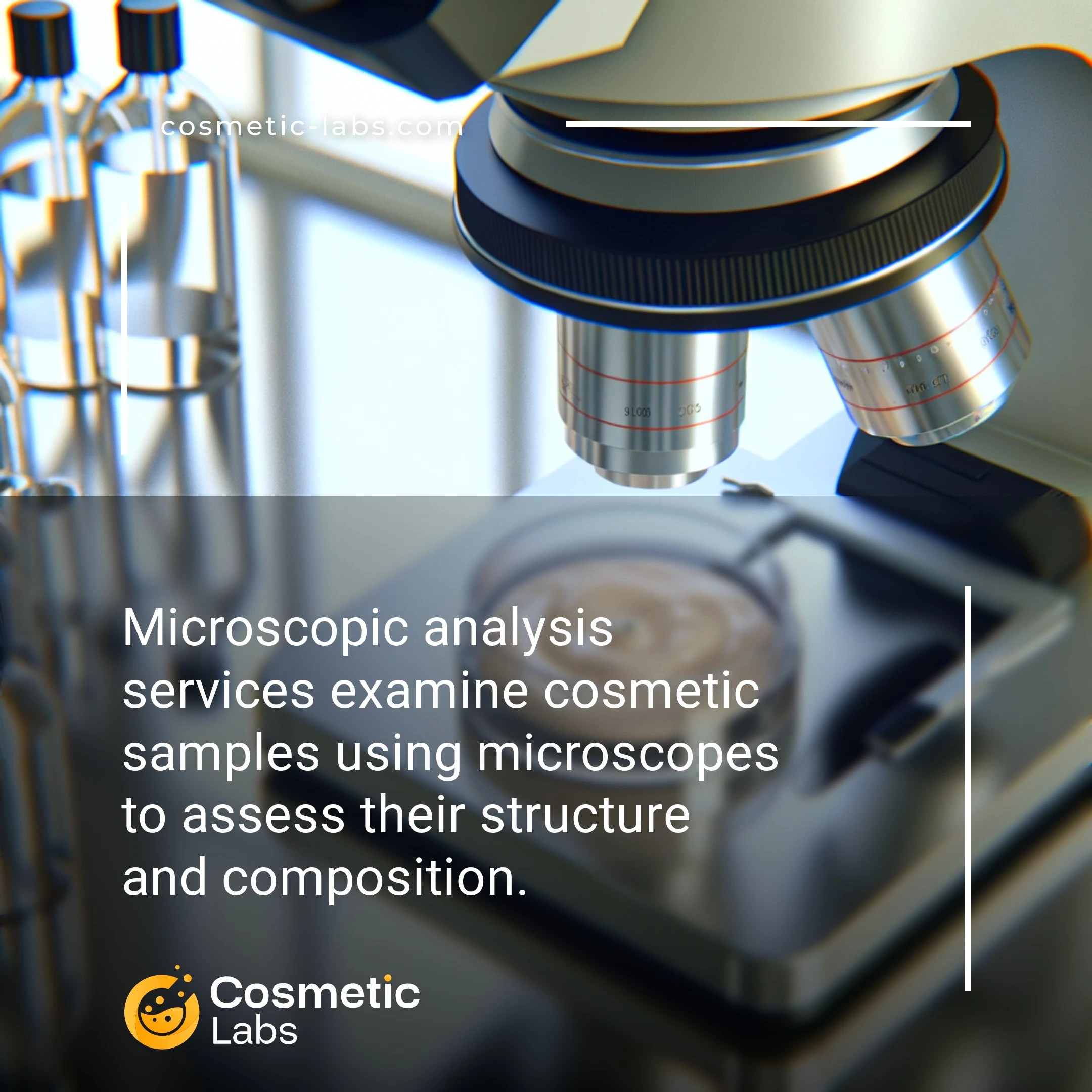Microscopic Analysis Services for Cosmetic Product Development

What is Microscopic analysis?
Microscopic analysis services examine your cosmetic formulations at the cellular level, revealing particle size distribution, emulsion stability, and crystal formation that affect product texture and performance. Labs use optical and electron microscopy to detect contamination, verify ingredient dispersion, and ensure your products meet quality standards before manufacturing. This visual inspection catches formulation issues that standard testing might miss, saving you from costly batch failures.
Why do you need this service?
Cosmetic labs apply microscopic analysis to detect contaminants and verify particle sizes in formulations before production scale-up. Teams examine emulsion stability through phase separation patterns, identify crystallization issues in lipsticks, and measure pigment distribution in color cosmetics. This detailed imaging helps you catch formulation problems early, saving thousands in rejected batches and ensuring consistent product quality across manufacturing runs.
Who provides Microscopic analysis services?
All cosmetic labs providing Microscopic analysis services
There is no company providing these services at the moment.
Microscopic Analysis for Cosmetic Products
Microscopic analysis reveals what the naked eye can’t see in your cosmetic formulations. Labs use advanced microscopy techniques to examine particle size, dispersion quality, and structural integrity of your products at the cellular level.
Types of Microscopic Testing Available
Partner labs offer several microscopy methods tailored to cosmetic development needs. Light microscopy examines emulsion stability and identifies contamination in raw materials. Electron microscopy provides ultra-high magnification for nanoparticle analysis and surface characterization.
- Polarized light microscopy for crystal formation in powders
- Fluorescence microscopy for active ingredient distribution
- Scanning electron microscopy (SEM) for texture analysis
- Transmission electron microscopy (TEM) for liposome structure
These techniques help you verify product consistency batch after batch. Labs typically deliver results within 3-5 business days with detailed imaging reports.
Applications in Product Development
Microscopic analysis serves multiple purposes throughout your product development cycle. During formulation, it helps optimize particle size for better skin penetration and product feel. Quality control teams use it to spot aggregation issues before products reach consumers.
Common applications include:
- Checking sunscreen dispersion uniformity
- Measuring pigment particle size in color cosmetics
- Evaluating preservative distribution in creams
- Detecting microbial contamination early
Labs equipped with digital imaging systems provide visual documentation you can share with regulatory bodies or use in marketing materials to showcase product quality.
Practical Applications of Microscopic Analysis in Cosmetic Development
Microscopic analysis reveals product characteristics invisible to standard testing, providing data that shapes formulation decisions and quality standards.
Raw Material Verification and Particle Characterization
Labs use optical and electron microscopy for cosmetic ingredient analysis to verify particle sizes in pigments, powders, and active ingredients. A foundation manufacturer needs particles between 5-15 microns for smooth application—too large creates grittiness, too small causes caking.
Scanning electron microscopy (SEM) captures surface morphology of titanium dioxide particles, while laser diffraction confirms size distribution meets specifications. This data prevents batch failures and customer complaints about texture or coverage.
Emulsion Stability and Structure Assessment
Cosmetic labs examine droplet size distribution in creams and serums using phase-contrast microscopy. A stable moisturizer shows uniform droplets between 1-5 microns that remain consistent over 12 months.
Polarized light microscopy identifies crystallization in lipsticks or balms before visible changes occur. Labs document these structural changes at different temperatures, helping brands predict shelf life and storage requirements across global markets.
| Analysis Type | Equipment Used | Key Applications | Typical Timeline |
|---|---|---|---|
| Particle Size Analysis | Laser Diffraction, SEM | Powder products, pigments, sunscreens | 2-3 days |
| Emulsion Characterization | Optical Microscopy | Creams, lotions, serums | 1-2 days |
| Crystal Formation | Polarized Light Microscopy | Lipsticks, balms, waxes | 3-5 days |
| Surface Morphology | AFM, SEM | Coated particles, encapsulated actives | 4-7 days |
Partner with specialized cosmetic testing labs on our platform to access advanced microscopy services that validate your formulations meet performance standards.
